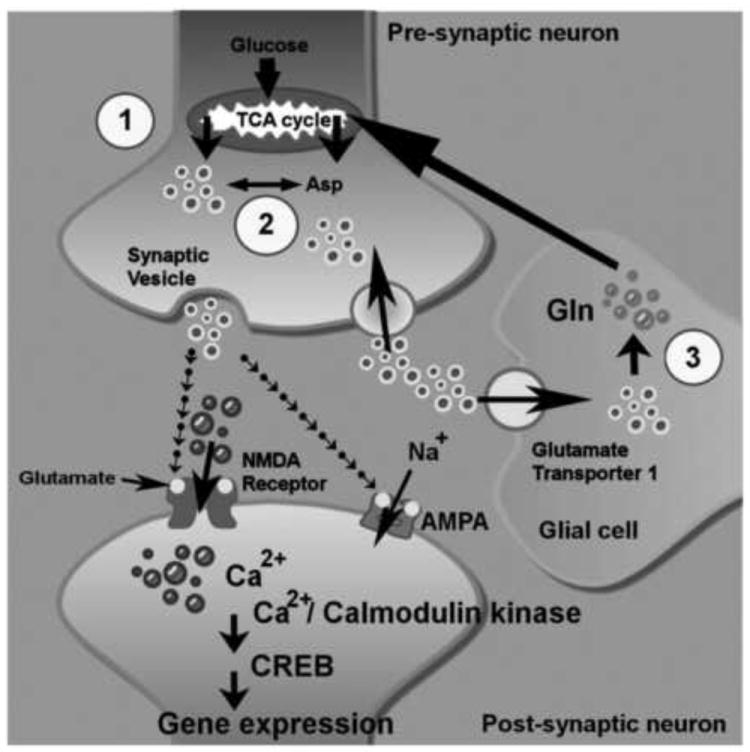Figure 1.

Glutamate synthesis, recycling, and signaling in neuronal cells. The glutamate concentration is well maintained in central nervous system (CNS). Glutamate (light ringed circles) is commonly derived from products of TCA (citric acid cycle) (circle number 1) and converts from Aspartate (Asp) by aspartate transaminase (circle number 2). The released glutamate in the synaptic gap can be promptly sequestered into neurons and/or glial cells via glutamate transporter 1. The recycled glutamate is converted into glutamine by glutaminase in glial cells. Then, glutamine is delivered to neurons and converted into glutamate by glutamate synthetase (circle number 3). The activation of α-amino-3-hydroxy-5-methyl-4-isoxazolepropionic acid receptor (AMPA) receptors by glutamate binding trigger Na+ influx and consequently cause membrane depolarization. In the meantime, the depolarized membrane facilitates the Ca2+ influx (dark ringed circles) from activated N-Methyl-d-aspartic acid (NMDA) receptors. The cytosolic Ca2+ acts as a secondary messenger to initiate Ca2+/calmodulin-dependent kinase and CREB-mediated regulation of gene expression.
